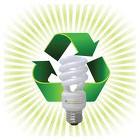 Pop quiz: What technology in your home is 132 years old and yet is still being used today. The answer is the incandescent light bulb. It is hard to believe that with all the advances in the last 100 years and especially in the last 20 years that we still rely on a technology, invented by Thomas Edison, when our great grandparents were alive. In the last few years however, the game has changed and we are now making significant advances on improving the good old light bulb.
Pop quiz: What technology in your home is 132 years old and yet is still being used today. The answer is the incandescent light bulb. It is hard to believe that with all the advances in the last 100 years and especially in the last 20 years that we still rely on a technology, invented by Thomas Edison, when our great grandparents were alive. In the last few years however, the game has changed and we are now making significant advances on improving the good old light bulb.
With everyone now thinking about real energy conservation, new technologies are moving with incredible speeds. The inefficient light bulb is in the sights of conservationists, and industry is responding. I must say that even everyday people like you and me are becoming aware that the way we currently think and act in our daily lives is unsustainable and our mindset needs to be changed. No longer do we have the luxury to say that what we consume is plentiful and will never diminish.
So what about the new “green” light bulbs. There are basically two concurrent technologies attacking the problem.
The first is the fluorescent bulb, or more precisely the compact fluorescent light (CFL). Fluorescent technology is not that new. I remember going to Frank Lloyd Wright’s 1936 Falling Water home and noticing in the bathroom a “new technology” fluorescent fixture used in the residence. That makes this technology 75 years old. What is different today is that this technology has been “upgraded” to a point where we can make mini versions of the 4 foot strip. By doing this we can:
- Have a 4X more energy efficient bulb (50-80% less energy consumption than incandescent).
- Reduce the heat that is emitted by a standard bulb.
- Still use a standard light bulb socket.
- Have the new bulb last 10X longer than an incandescent bulb.
- Emit light similar to the standard light bulb.
- Keep a half ton of CO2 out of the atmosphere over the life of the bulb.
One notable drawback to this new technology is that each fixture contains a very small amount of mercury. If you accidentally break one you should do the following:
- Open a window and leave the room for a minimum of 15 minutes.
- Use a wet rag to clean it up and put all the pieces, and the rag, into a plastic bag.
- Place all materials in a second sealed plastic bag.
- Call your local recycling center to see if they accept this material, otherwise put it in your local trash.
- Wash your hands afterward.
The next generation in home lighting is Light Emitting Diodes (LED’s). These are very small solid lights that are extremely energy efficient. Until recently you would have seen these as power indicators on instrument panels like a stereo or TV. By clustering these bulbs, manufacturers have greatly increased the use of these fixtures. You now see them in flashlights, car headlights, indoor and outdoor lighting of all kinds. There are now even High Intensity LED streetlights.
The high cost of producing LED’s has been a roadblock to widespread use, but as technology improves we will be seeing them more frequently. The advantages of LED’s are very impressive:
- They are longer lasting. LED’s last up to 10 times longer than the new compact fluorescents and much longer than the old incandescent.
- Since they do not have a filament, LED’s are not damaged easily which makes them very durable.
- There is very little heat produced by LED’s which eliminates the need to cool or insulate them from overheating.
- There is no mercury in LED’s which make them very environmentally friendly.
- LED’s consume very small amounts of energy (about 70% less than a CFL or Incandescent) which make them very efficient.
- LED’s work well in remote areas where electricity may not be readily available. An example is the solar powered lighting for walkways for your house.
- Even though LED’s right now are expensive, the life cycle cost easily outweighs the initial cost. I recently purchased some LED’s for my home that were good for 50,000 hours. If I ran these bulbs for 8 hours a day, 365 days a year, it would take 16 years for the bulbs to run out. That certainly would recoup my high initial cost when I spread it out over that length of time.
So even though CFL’s are the relative new “Green” kid on the block and the incandescent bulb will soon go the way of the Dodo bird, look to LED’s to gain more and more popularity. I am reminded of the classic movie “the Graduate” with Dustin Hoffman. Dustin is told by Mr. Robinson that the future is “Just one word: PLASTIC”, and back in the 60’s they were right. Now, given the same circumstances, I would have to say the “Just one word is LED”.
How about this for a statistic: If everyone in the US used energy efficient lighting right now, we could close down 90 average size power plants. Saving energy on this scale can not only reduce CO2 emissions, but also sulfur oxide and high-level nuclear waste. Now that is “Green” thinking on an earth changing scale.
# Some of the information on researching for this article was obtained from eartheasy.com.

